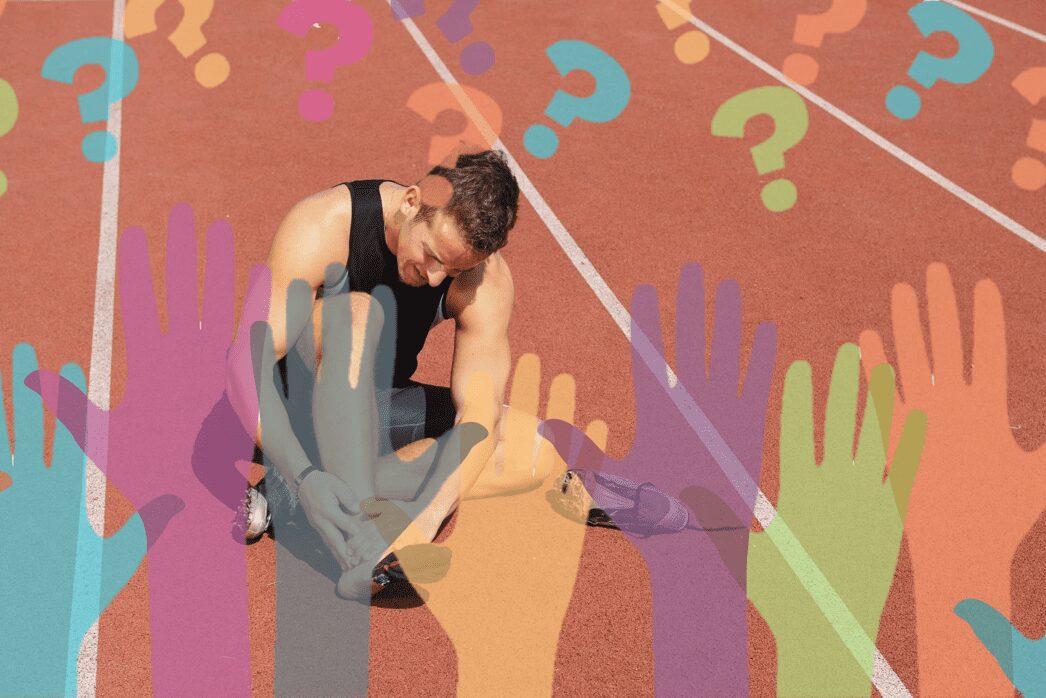Dr Kate, Chief Medic Bear answered Running Bear Running Club’s Questions last week. A recently retired GP and keen club runner, Kate used her valuable knowledge to help out the Bears’ burning questions!
Want to be a part of conversations like these? Join RBRC here!
What are your top remedies for shin splints?
Shin splints have many causes and identifying the reason they developed will be the best remedy.
Commonly worn out or incorrect trainers, too rapid increase in training (>10% a week), weak core/glutes….
Ice the area for 15 mins three times a day – frozen peas wrapped in a towel work well. Take anti- inflammatories such as ibuprofen if it is safe for you to do so.
Unfortunately also stop running in the short term – but do cross train e.g.cycle or swim.
If settle quickly a cautious return to running at a lower mileage is advised. Don’t hesitate to get physio input.
https://m.youtube.com/watch?v=Z2G5WCJBpps
You may find these stretches helpful too.
How can someone ease the pain of chafing?
Depending which area of the body is affected look at clothing to prevent it e.g. longer shorts.
Use one of the many soothing creams available – there are specific glide creams on the market but you can also use Vaseline. Sudocrem works well too or any cream you personally find suits.
How do you know when you’re the optimal weight for racing, without losing power?
I think there is a general move away from specific weight goals – building power through strength training is something all runners should consider. If your job involves a lot of sitting at a screen ensure you walk around regularly and look at a standing desk if possible. Sitting turns off your glutes which are your powerhouse for running.
Body weight exercises for glutes such as squats and lunges are ideal – can progress to gym classes or via YouTube.
The clips that have been posted on RBRC are ideal!
Do you have home recovery tips for treating for plantar faciitiis?
Like with shin splints looks at the cause.
Rolling your foot over a firm ball – e.g. tennis/golf ball helps. You can also freeze water in a plastic cup and use that – so you’re icing at the same time!
Some people can tolerate a night splint – a sock with a strap to the shin that keeps your ankle from relaxing overnight. However from personal experience using one for Achilles issues it does tend to get discarded in the wee small hours!
Hi Kate, can caffeine intake have a negative impact on performance? Thanks
If you have an underlying heart condition,are pregnant or on certain medication limiting your intake is advised. Likewise you can still have too much of a good thing which can lead to feeling shakey and poor sleep. Responses are individual so each person will need judge for themselves how to use caffeine to help their running.
Running when unwell?
Another issue commonly discussed is whether to run if unwell. A rule of thumb is if you have a cold and the symptoms are above the neck then it’s ok to run but be prepared to alter your run to an easy pace/ shorter distance.
Clearly if you have ANY Covid-19 symptoms the answer is no. Self-isolate and get a test done – ASAP.
Recovery…
Overtraining is sometimes a concern – signs such as performance dropping off,increased perceived effort,excessive fatigue,poor sleep,increased stress symptoms are to be heeded. Listen to those who know you best as it can be difficult to be objective about yourself.
A period of active recovery with eg yoga to help keep flexible and calm and then graded return to lower volume/intensity schedule is advised.
For anyone who has had Covid-19 symptoms can persist for month of fatigue and body pain. Focus on keeping active without increasing your symptoms – don’t try and return to running till brisk walking doesn’t exacerbate things. Then concentrate on easy jogging and get a fitness base back again before returning to intervals and tempo runs.
Angie from Physiofit added…
Great advice. In kids we see recurrent sore throats and more niggles as the over training starts to kick in. Under recovery as key as over training.
Vegan Running
I was asked a question earlier today about becoming vegan and it’s impact on running.
It may take some time to get your new diet right so opt for low intensity/low frequency/short duration initially.
Pre-exercise ensure you’ve had some carbs e.g. porridge at breakfast.
Snacks such as dates can help and can be used during a run if you’re not keen on gels.
Post-exercise try to eat within the hour. Protein and carbs should be included e.g. fruit smoothies using soy milk/coconut yoghurt or lentil spaghetti bolognaise.
Plant based foods are less energy dense that animal based ones so you may need snacks between meals – ensure that on the whole they are healthy e.g. nuts.
Hi Kate, Any advice on the best food to eat to aid recovery after a hard race or training run?
Carbs with some protein to rebuild your muscles eg salmon with rice. After your heroic Pennine Way run of 270 miles in 10 days you’ll have some micro-inflammation which anti-oxidants will help with so up your fruit and veg to 10 portions a day if you can. To make sure there’s a wide variety try and eat a rainbow every day ie something from each of those 7 colours.
I run 4/5 times a week. I’ve read conflicting advice about what vitamins may be beneficial. What is your advice on the subject?
A healthy diet is best as that will mean you get micro-nutrients too eg zinc. The eating a rainbow advice above would apply here too.
Try and eat as varied a diet as possible. Our gut has it’s own load of healthy bugs called the micro-biome and we need to keep that in good health this way. There is some evidence for live culture yoghurts and fermented foods such as sauerkraut/kimchi/kefir.
Hi Doctor Kate, how would go about transitioning from a higher heel drop to a lower one without causing achilles issues?
Cautiously! Take it in stages and spend some months walking then running in each smaller heel drop before progressing. Start with shorter runs too so as long so as to ensure not causing any issues.
Work on calf and Achilles strength with calf raises/heel walking.
Angie from PhysioFit added…
Most importantly don’t try to change something that suits you well! The flatter the shoe the greater strain on the calf and achilles complex and the higher drop the greater stress on knee and hip. To transition to minimalist shoe takes up to 18 months and should involve several stages to slowly reduce the drop. When starting do short bursts in the lower drop shoe and gradually build up.
Do you have any questions for Dr Kate? Join RBRC or email us on info@runningbear.co.uk, we’re happy to help!

